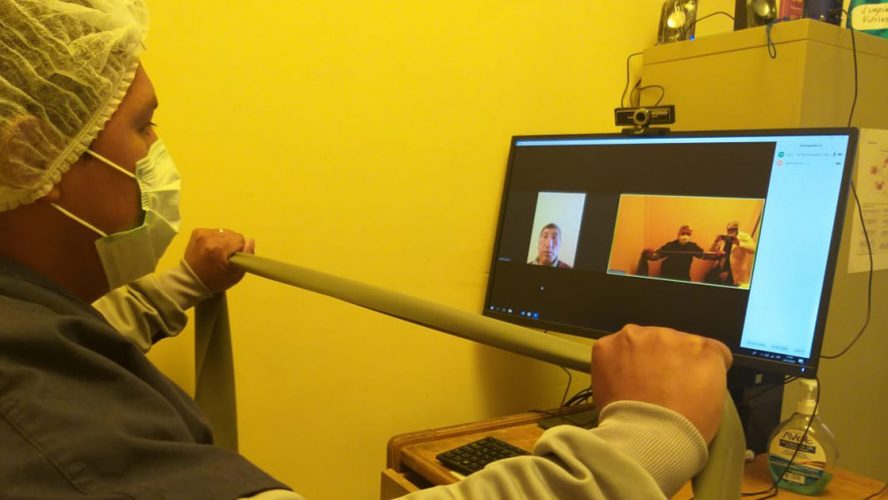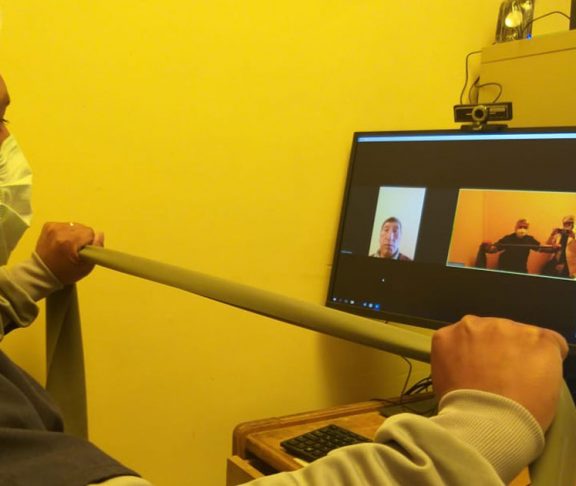It takes patience, strength, and hard work to reclaim independence after an accident or illness. Rehabilitation is essential to that recovery.
But when COVID-19 emerged, and quickly spread across the globe in 2020, lockdowns were put in place and health facilities became overwhelmed with treating patients fighting the virus. With limited access to healthcare — including rehabilitation services — health providers adapted.
In the United States and around the globe, telehealth has been put to the test in unprecedented ways and is sure to have long-term effects on how patients receive care. To continue care and limit the virus’ spread, many practitioners quickly began treating their patients virtually.
Enabling physical therapy
In countries with strict COVID-19 lockdowns, online telerehabilitation has enabled thousands of patients to continue their physical therapy sessions at home by connecting with their therapists by video, via WhatsApp, or simply by receiving check-ins and new exercises by phone.
Humanity & Inclusion, an international organization that provides rehabilitation services to patients in low- and middle-income countries, has deployed digital technology to organize thousands of telerehabilitation sessions in countries like Bolivia, Cambodia, Colombia, Nepal and Rwanda.
According to a study published in November in the American Journal of Physical Medicine & Rehabilitation, surveyed patients rated their telerehabilitation experiences highly and see value in virtual medicine. In the United States and other developed countries, telerehabilitation presents a convenient alternative to in-person visits, cutting down on travel times to and from health facilities, and preventing long waits in crowded waiting rooms.
In less developed countries — particularly in rural and isolated villages or areas affected by conflict — where access to rehabilitation was already limited because it is unaffordable or simply unavailable, telerehabilitation is a game-changer.
Eighty percent of people with disabilities live in developing countries, but fewer than 15 percent have access to rehabilitation services. The pandemic has only made matters worse.
Committed to excellence
Since its creation in 1982, Humanity & Inclusion has worked alongside its partners to develop quality services that are accessible to people with disabilities, and vulnerable and excluded populations. Since 2016, Humanity & Inclusion has been developing its telerehabilitation activities to provide rehabilitation care to people who are isolated or unable to access services.
In response to the pandemic, Humanity & Inclusion quickly upscaled its telerehabilitation tools. In Bolivia, for example, telerehabilitation started prior to the COVID-19 crisis, but when the pandemic led to total closure of Humanity & Inclusion’s rehabilitation center there, its use became even more essential.
“One of the biggest challenges in any humanitarian crisis is to provide the most vulnerable individuals and people living in remote areas, far from assistance or services, with access to care,” said Isabelle Urseau, Director of Rehabilitation at Humanity & Inclusion after the organization’s Tele Rehabilitation For All Project was awarded the 2020 European Horizon Prize. “By using digital technology … we can now care for people with physical disabilities living in areas that are isolated or difficult to access for security reasons.”
Telerehabilitation presents a solution to providing physical therapy and other services to patients who lack access to trained professionals, are unable to travel, or live in areas of conflict with fractured healthcare systems. While COVID-19 continues to present challenges in delivering healthcare services, it has demonstrated just how vital of a role digital technology can play in making rehabilitation accessible and convenient for patients everywhere.

